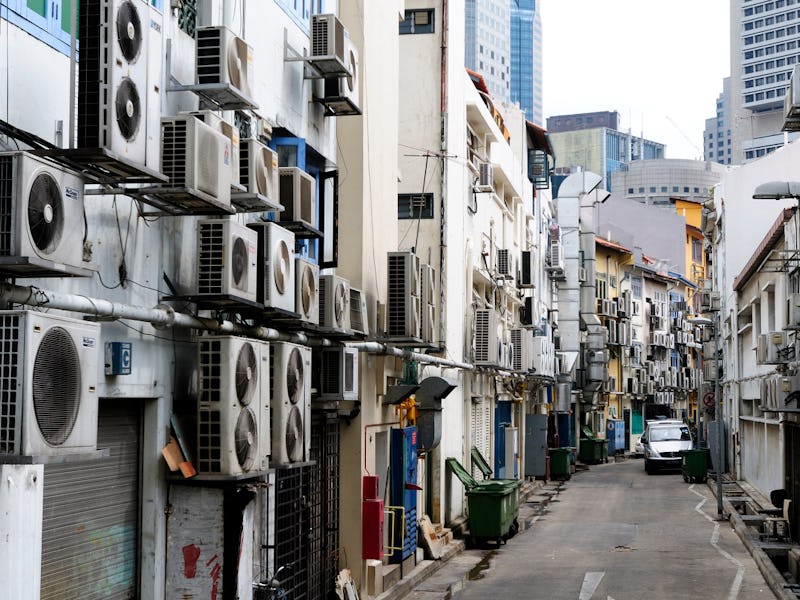Air Conditioners of the Future May Not Be Air Conditioners at All
Climate change goals and comfort aren't incompatible, we just have to be smarter about how we approach the problem.

Energy experts gathered during the COP21 climate change conference in Paris this week to urge radical technology progress toward a cleaner future.
Tuesday was christened “innovation day,” and the key message was that our rate of technological innovation must increase dramatically if we are going to serve the need of a population that is growing and getting richer as the planet heats up.
“As living standards increase and as productivity increases, one of the largest areas of consumption of energy is air conditioning,” said Ajay Mathur, the head of India’s Bureau of Energy Efficiency.
“We need people to have air conditioning, we need it to be amazingly efficient — possibly using at least half if not a third as much energy as we use today — and affordable as well. How do we make that happen?”
Air conditioners are perhaps the perfect climate change paradox. Seventy percent of the world’s population will live in cities by 2050, and most of the urbanization is happening in hot places like India. If the megacities of the future are going to hum along efficiently, they’re absolutely going to need air conditioning.
So demand for cooling is going to skyrocket, but getting emissions under control means air conditions systems of the future will have to use a fraction of the energy they do today. Right now, America uses more electricity for cooling than Africa does for everything.
This ancient stepwell from the royal palace at Mandu in India was designed to provide natural air conditioning.
Fortunately, technological solutions are possible, and they don’t all have to involve some fancy new gadget. The thing is, humans were coming up with clever ways to cool spaces without power for millennia. It’s something the architects of today are increasingly paying attention to.
Take the Pearl Academy of Fashion in India, for example. The interior space stays 20 degrees cooler than outside thanks to ancient stepwell technology integrated into the modern design. The stepwell, or baoli, is a pool of water surrounded by a descending set of steps, and as the water evaporates the air around it cools.
There’s more than one way to cool a space without power. Other passive cooling systems take advantage of wind, water, and heat sinks in different ways to create interior micro-climates. These ingenious designs take advantage of whatever the local conditions happen to be to maximize comfort and minimize energy expended.
The air conditioner of the future may not be an air conditioner at all. With good design, humans will be free to kick their noisy, power-guzzling contraptions to the recycler and live in comfort, just like our ancestors did.
Bye!